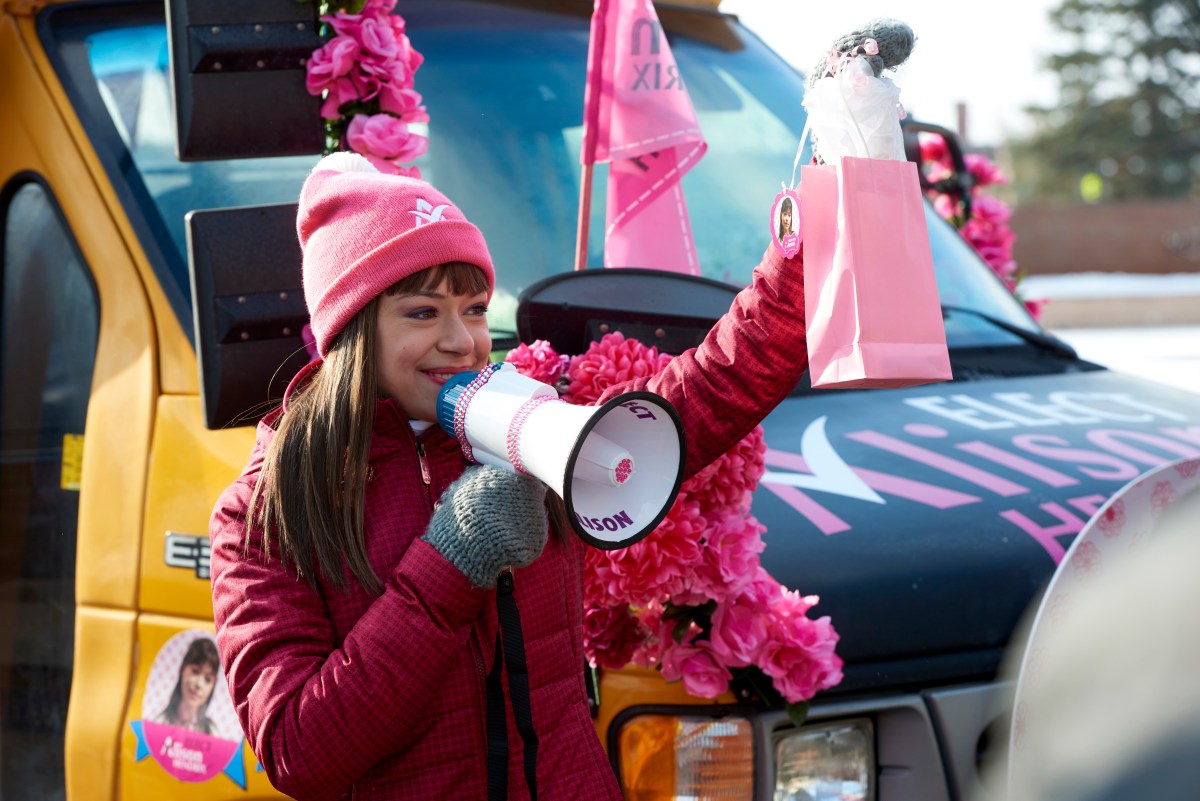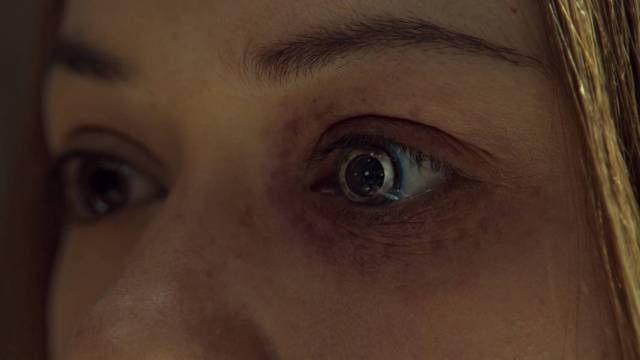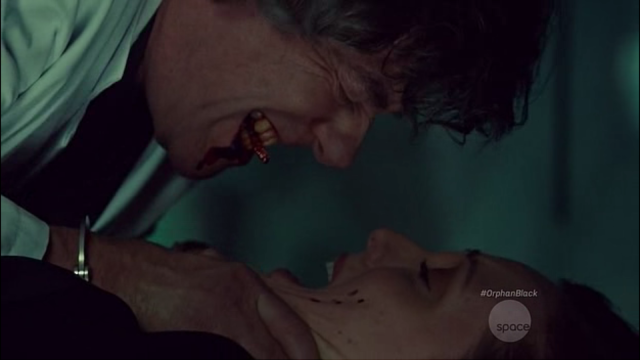Welcome to our Orphan Black science recaps, where Casey, a graduate student in genetics and developmental biology, and Nina, a professional science communicator, examine the science in each episode of OB and talk you through it in (mostly) easy-to-digest terms. Check out our regular OB recap for this episode here.
If you haven’t watched the latest episode of Orphan Black, be forewarned: there will be spoilers. There will also be crazy science.
Casey: What a finale that was!! And personally I was very excited to see Neolution make a comeback to the main plot. Turns out Castor was just a red herring and Neolution was the real Big Bad all along. Of course, with Neolution comes all sorts of creepy and ethically grey topics like biohacking, genetic manipulation, men with tails, etc. It leaves you feeling shocked and maybe makes your skin crawl, but it sure is fascinating!
Nina: Neolution and its aim for self-directed evolution falls in line with existing philosophies like transhumanism, post-humanism, or H+, which basically aim to transcend normal human abilities through biological, technological, or genetic enhancements. It’s mostly a philosophical movement right now; any practical work is pretty much limited to basic biohacking—stuff like drinking bulletproof coffee or soylent meal replacement (which, btw, both sound awful and have no real research to back their claimed benefits), to implanting magnets into your fingertips to sense magnetic fields (WHY).
Involving humans in more Neolution-style experimentation (the nitty-gritty tissue and genetic manipulation) introduces all sorts of ethics concerns. Not to mention, experiments involving permanent genetic or biological alterations to developing humans (AKA Projects Castor and Leda) are huge violations of what accepted ethics codes currently exist, namely the Declaration of Helsinki, which aims to protect human rights and welfare by placing informed consent and self-determination above the interests of science and society (Hmm… Helsinki—sound familiar?). But I mean, Dyad, Topside, and the Neolutionist never were operating under the pretense that their work was legal or anywhere near morally sound.
Are Neolution’s projects realistic? Well, yeah, they could happen (except for Nealon’s mouth worm—What was that?! Also DO NOT do an image search for “human-worm symbiosis” if you’re trying to figure it out. Just don’t do it, okay?). Should these projects happen in real life? Probably not, at least not for the reasons that we’ve seen on the show.
Casey: Yeah who knows what that worm was. Gross. But as far as people with tails, that’s definitely something that’s possible. Some people are actually born with small tail-like protrusions from their coccyx, because all developing human embryos have tails in the early stages that then diminish and eventually disappear.
Human cloning is also something that is scientifically possible, although it brings up big discussions on morals and ethics. Cloning a mouse in a laboratory is one thing because the mice do not have any rights, and they also have no sense of self. A human, however, is subject to laws and has autonomy. Human cloning brings up the question of who owns the clone: is it the clone themselves because they are a living human, or is it the scientists who created them and toiled over their biological material for years in the lab. This ties back to the patent Cosima and Delphine discovered in the Leda genome back in season 1. While the Leda clones lived their lives thinking they were their own person, it turns out DYAD had a different idea, and they believe that the clones really belong to them. These questions are why, while possible, human cloning probably won’t be a reality anytime soon.
Nina: This also ties back to some remarks that Rachel makes to Dyad shareholders at the beginning of season 2 (once in German and again in English). In 2013, the US Supreme Court rejected patents on “natural” human genes. Synthetic human genes, though? Those are fair game, and Rachel suggests that Dyad was the force pulling the strings on that issue so that they could maintain ownership of the clones’ synthetic sequences. Interestingly, Canada still allows gene patenting, but not the patenting of higher organisms.
Casey: As for what’s to come in season 4, I think Kendall’s biological material will definitely play a prominent role in the plot. Not only is her DNA of interest to Cosima in finding a cure for herself, but her DNA can also help to cure Mark of his end of the clone disease. It will be interesting to see if Mark continues to work with Clone Club and if Clone Club is willing to save him as well as themselves.
Nina: And that’s the last of our Orphan Black science recaps, folks. Thanks for reading —we look forward to nerding out again next season! Good luck with hiatus.
Casey Griffin is a graduate student in genetics and developmental biology. She dissects mouse hearts, does lots of PCRs, and nerds (and cries and screams) about Orphan Black. You can check out her OB Science Time Tumblr posts here.
Nina Nesseth is a professional science communicator, emerging playwright, and serial tea-drinker. She’s happiest when science-ing at people (yes, that’s “science” as a verb) and watches way too many movies (but she lacks stamina and falls asleep if she tries to watch two in a row). You can find her on Twitter@cestmabiologie.











Published: Jun 25, 2015 05:00 pm